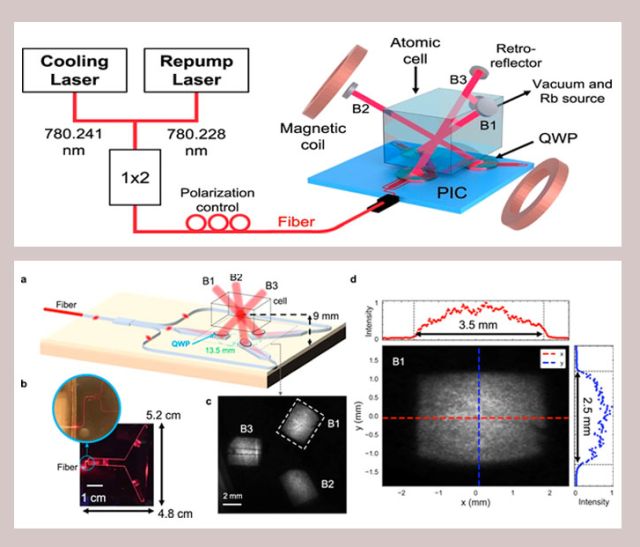Blumenthal – Quantum Atomic Sensors
ECE's Prof. Dan Blumenthal conducts NSF-funded research to pursue quantum-scale sensor technologies

Excerpt from The UCSB Current article "UC Santa Barbara Quantum Scientists to Conduct NSF-funded Research to Pursue Quantum-scale Sensor Technologies"
At the atomic and subatomic scales exist behaviors that have vast potential to enhance how we see and interact with the world, by improving current technologies and potentially giving rise to new ones. The main advantage to be gained from the realm of quantum sensing is its extreme sensitivity and accuracy, able to capture the faintest of signals and measure at the smallest of scales.
Now, several UC Santa Barbara researchers are poised to deploy their expertise in quantum science as part of the U.S. National Science Foundation’s (NSF) program Quantum Sensing Challenges for Transformational Advances in Quantum Systems (QuSeC-TAQS). They join a cohort of 18 research teams at universities across the U.S. backed by a $29 million investment from NSF to explore ways to harness the infinitesimal and sometimes counterintuitive quantum-scale properties of nature to create opportunities at the human scale.
The teams will each receive $1 million to $2 million over four years to conduct a broad range of exploratory research activities. The potential impacts are diverse, from the ability to sense gravitational waves as they ripple across space, to a means for witnessing the inner functions of living cells.
“For decades, scientific exploration at the quantum scale has yielded surprising discoveries about how our universe works — and tantalizing possibilities for quantum enabled technologies,” said NSF Director Sethuraman Panchanathan. “We are now taking the next step in quantum research through these projects and others, which combine fundamental research with potential applications that can positively impact our lives, our economic prosperity and our competitiveness as a nation.”
What makes quantum sensors ideal — their amazing sensitivity — also makes them vulnerable to the noise brought on by temperatures and electromagnetic fields. Electrical and computer engineering Distinguished Professor Daniel Blumenthal will work to overcome these hurdles alongside colleagues at University of Wisconsin-Madison (UW-Madison). Led by UW-Madison electrical and computer engineering Professor Jennifer Choy, the team also includes UW Professors Mikhail Kats, Mark Saffman and Swamit Tannu.
The quantum sensor of choice? Cold atoms. When atoms are cooled to almost absolute zero, they take on certain quantum properties; the challenge for the team is to enable cold-atom sensors that are not only compact, but also portable and robust to the environment, using photonic integration technologies developed in the Blumenthal lab at UCSB.
“We are excited to apply our state of the art ultra-low loss silicon nitride photonic integration platform to this research,” said Blumenthal, whose expertise lies in visible light high-performance photonics, ultra-narrow linewidth lasers and integration of cold atom and quantum sensing and computing systems. “In our lab we will be applying our complimentary metal-oxide-semiconductor (CMOS) foundry-compatible silicon nitride platform to design, fabricate and test ultra-narrow linewidth lasers, on chip reference cavities, and photonic circuits for cooling and trapping rubidium atoms and demonstrate functions needed to miniaturize an inertially sensitive cold-rubidium atom interferometer. We will be building on our recent successful demonstration of photonic integration for generating cold rubidium atoms in a 3-dimensional magneto-optical trap (3DMOT).”
To miniaturize these systems and make them more rugged, the team plans to develop and integrate a set of photonic chip-scale hardware and algorithms, comprising a “quantum sensor toolkit” that includes lasers and optics, optimized quantum algorithms for sensor fusion and calibrations, and optimal leveraging of quantum entanglement.
These sensors could be used in portable devices such as accelerometers and atomic clocks that could be used to take measurements in harsh conditions, like outer space or the poles, and that could guide vehicles where GPS is not available.
The UCSB Current – "UC Santa Barbara Quantum Scientists to Conduct NSF-funded Research to Pursue Quantum-scale Sensor Technologies" (full article)
Additional ECE faculty highlighted in the article:
ECE Prof. Galan Moody and Scientist Paolo Pintus – "A quantum-enhanced optical magnetometer"